Sometimes when we train we try to get too fancy. We forget the simple exercises that can hit multiple body parts at once. Compound exercises, for example, allow you to “use the heaviest load possible, involve multiple joint articulations and stimulate a large amount of muscle mass,” explains Eric Cressey, president of Cressey Sports Performance. “As an added bonus, the majority of these movements are performed [from a] standing position, meaning that you will need to display proper control of your body. Compound exercises are also more likely to increase your anabolic response to training, which is paramount when you’re trying to increase lean muscle tissue.”
Compound exercises have also been found to:
Compound exercises address many actions at once, making them both efficient and effective. Here are some of the best compound exercises to add to your workout.
1. Hip Hinge or Deadlift
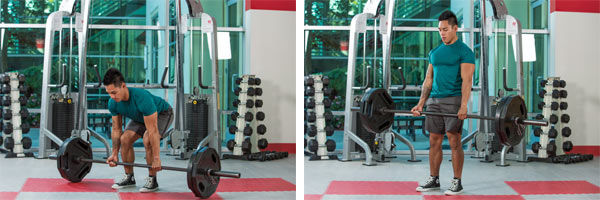
This compound movement targets the forearms, lats, glutes, hamstrings, core stabilizers and upper-, mid- and lower-back. It’s an amazing exercise for the whole posterior chain.
Stand with feet about hip-width apart. Make sure you are close enough to the bar. Drive your hips back. Take tension out of the bar. Brace your core, keep tension in the lats and the knees soft as you push your heels into the floor. As the bar approaches the knees, think about shooting your hips into the bar. Finish in a tall stand while clenching your glutes.
2. Squat
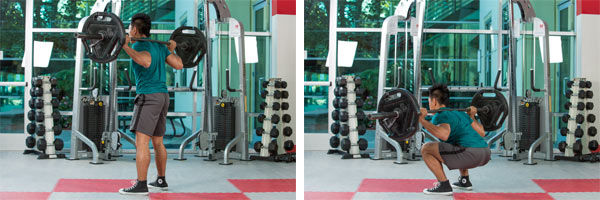
This exercise enhances mobility in the hips and ankles, and challenges core stabilizers, posterior chain, lower legs and quads.
Stand with feet shoulder-width apart. Dial your feet into the floor, activating your hips. Control the downward, or eccentric phase toward the floor—don’t let gravity lower you down. Move the tailbone toward the floor, while maintaining a tall, engaged torso. Push the floor away and rise to stand, fully extending.
3. Loaded Carries
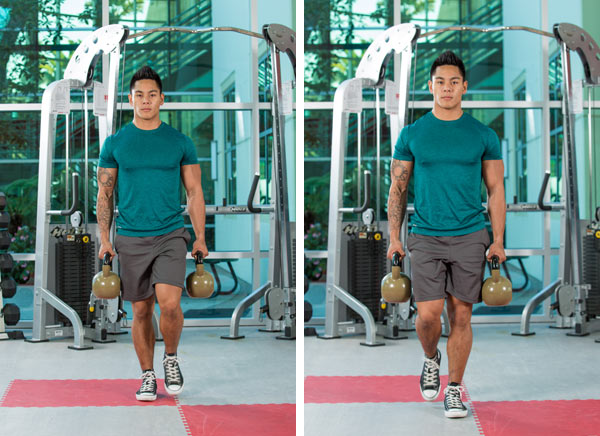
This exercise targets grip, shoulders, back, core stabilizers, arms and legs. You can perform loaded carries with dumbbells, buckets of water, kettlebells, sandbags, trap bars, etc.
Brace your core and bend down and grab two of the heavy implements you will be using and walk as far as you can. Rest and then do it again…and again.
4. Pull-ups
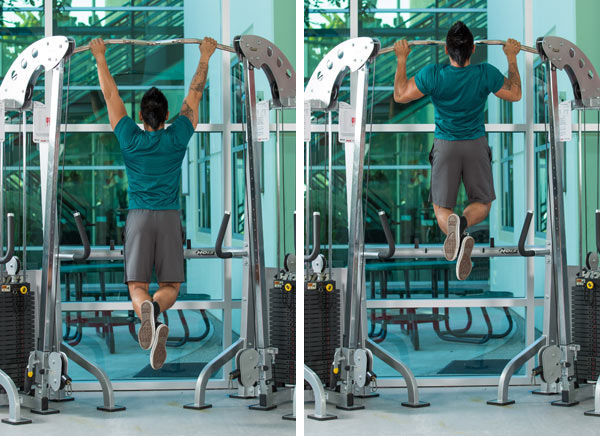
The primary movements of the lats are upper-arm adduction, internal rotation and extension, but their secondary properties make them adaptable to train for posture. Strengthening the lats will provide better postural stabilization of the spine and lower pelvis because of its attachment points. The pull-up also trains grip, arms, shoulders, back, core and pelvic floor.
To start, arms should be fully extended. True pull-ups work through a full range of motion. Retract the scapula, stabilize the girdle and initiate the work or muscular contractions by pulling your body up until your chin is over the bar. Lower the body in a very controlled manner until arms are fully extended.
5. Push-ups
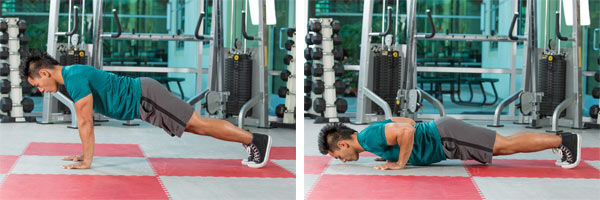
Your arms, shoulders, serratus, core stabilizers and pectoral muscles, along with the legs, glutes and lats are all engaged to help you maintain a zipped-up line.
Place your hands on the floor directly under the shoulders with fingers spread wide. Squeeze the glutes and press the heels away. Keep your head in line with your body and bend the elbows to lower the chest with control toward the floor. There should be no sagging anywhere in your body. Keep the legs, glutes and shoulders engaged as you press back up to the starting position.




 by
by 





 by
by